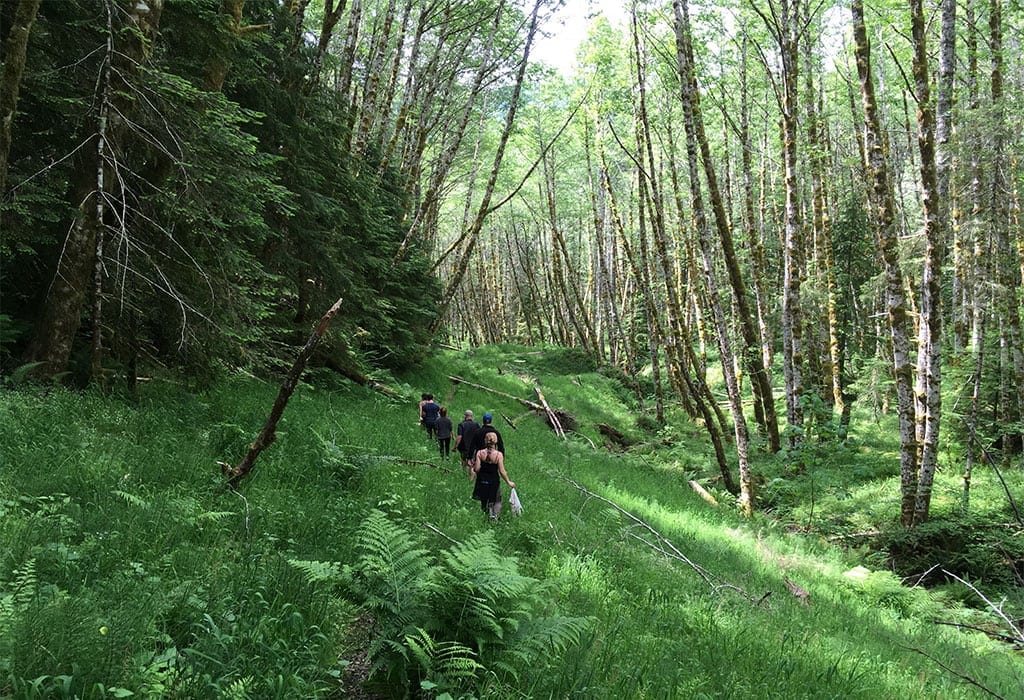What the heck is rewilding? Ask and perhaps you’ll get responses like:
“Isn’t that when people run around in loincloths making fire with twigs?”
“Isn’t that the return of the woolly mammoth to North America?”
“Isn’t that the effort to exclude people from wilderness?”
The word “rewilding” does have a history with all of these things, but, like many words, its meaning has changed over time. At Guardians, we define rewilding as a healing—a healing of the scars cut across our public lands from decades of exploitation for corporate profit. Forests – logged to stumps. Rivers – blocked by dams. Lands – pierced by mines and pipelines. And roads built everywhere. Once all that could be easily taken was gone, the broken pieces were strewn across the landscape.

A washed-out road on the Mt. Baker-Snoqualmie National Forest. Not only is the road uncrossable for people, but the sediment washed into the adjacent river also harms the environment.
The wolves, grizzly bears, lynx, Chinook salmon, jumping mice, and even the Coral Pink Sand Dunes Tiger Beetle that we work hard to protect also need homes to live and prosper in. Sometimes these homes are rivers that are clean, cold, and connected. Other times, they’re lands with abundant food, places to hide, and areas to roam unharrassed. Rewilding is a way to refurbish these home lands and waters.
We humans need those places too. Social media tells us to #gooutside, #lovepubliclands, and to #unplug or #takeahike. We need places to breathe, to be quiet, or to laugh; to be with family and friends, and to pause under the towering bulk of 200-year-old trees or cacti. To disconnect from one component of life and connect to another.
Our rewilding work aims to erase the scars from over-extraction and to restore homelands—wild places. We work on policy, pushing the Forest Service nationally and regionally to keep restoration of lands and waters on their agenda. We work in local forests, reading through hundreds of pages of project proposals and then drafting comments. We work with many, many other nonprofits, supporting their efforts and asking for help with ours. We work in the courts, defending the rights of bull trout to swim in streams not clogged with sediment. And we work with Congress, speaking against bad bills and speaking for funding for restoration work on public lands.
Maybe we can’t return the woolly mammoth to North America, but we can make sure that bits of rivers and other bits of lands are rewilded—for the lesser prairie chicken, prairie dog, coyote, steelhead trout, caddisfly…and for us.


